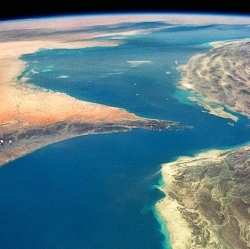
Nasa is planning small satellite missions that could open up new ways of exploring the Solar System. James Green, head of planetary science at Nasa, told BBC News that the agency was investing in the technology and looking at how best it could be used. Scientists studying these "smallsats" believe they have now proven their utility for cutting edge science.
They could be deployed from larger spacecraft to carry out targeted investigations, Dr Green explained. These would complement the objectives of the main mission. Indeed, the Insight mission to Mars will test this approach, despatching two small satellites to collect data as the main lander descends to the Red Planet’s surface.
But smallsats could also operate in constellations of 10 or many more.
"We’re thinking about some other cubesat concepts, not only at Mars, but at the Moon, at asteroids, at Venus," the director of Nasa’s planetary science division told me here at the Lunar and Planetary Science Conference (LPSC) in Texas.
Dr Green said: "There’s an array of ideas that we’re kicking around right now. So I think what we’ll see in the next 10 or 15 years is that the smaller satellites will have their own way to be implemented in planetary science that will be very complementary and we’ll get some exciting science from them."
These spacecraft typically weigh less than 180kg compared with several tonnes for the satellites commonly used for bigger, costlier planetary missions.
"What we’re seeing is a capability that we haven’t really seen before in terms of small satellites that can do pretty good science at a much reduced cost compared to the big missions," Dr Steve Mackwell from the Universities Space Research Association (USRA) in Maryland told BBC News.
"The miniaturisation and new capabilities means that we can open up science to places that we would have had to send a larger mission, and as a result it may never have flown."
"We’re really opening up the opportunity to look at the inner Solar System, to places like Venus and the Moon."
